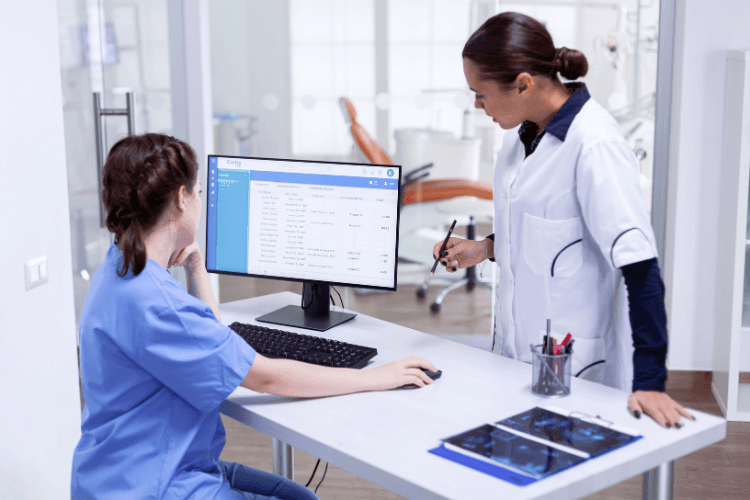How can Teleradiology be Used for Second Opinions?
With the development of communication technologies and the ability to transmit images from a computer to distant locations in a short time, teleradiology is becoming a more common solution for the interpretation of diagnostic images. Teleradiology offers several benefits, including efficient management of high-volume scans, rapid interpretations, and support for nighthawk services. However, there is another significant advantage that teleradiology can provide: the ability to obtain a valuable "second opinion."
What is Second Opinion in Radiology?
A second opinion in radiology refers to a medical professional, usually, a radiologist, who provides an independent evaluation and interpretation of radiological images or studies, such as X-rays, CT scans, MRI scans, ultrasounds, etc.
A patient or their primary care physician may request a second opinion to confirm a diagnosis or treatment plan or provide additional insights that may have been missed in the initial interpretation. It can also be beneficial in cases where a diagnosis is uncertain or complex or when there is disagreement among healthcare providers regarding the interpretation of imaging studies. Obtaining a second opinion in radiology is a common practice and can help ensure patients receive the most accurate diagnosis and treatment plan possible.
Importance of Second Opinions
Second opinions are crucial in diagnosing and treating many medical conditions, including those related to radiology. The use of teleradiology for second opinions has increased in recent years due to its convenience, speed, and accuracy.
Teleradiology allows a second opinion to be taken by any radiologist, regardless of place or time. All subspecialists are available in the teleradiology setup 24/7, which is not possible in conventional radiology practice because it is expensive to have a radiologist on-site all the time and practically not likely to have all specialist radiologists available in one place. The importance of getting a second opinion from a subspecialty radiologist is that it can ensure the accuracy of the diagnosis.
Here are some ways in which teleradiology can be used for second opinions;
1. Specialist consultations
In some cases, radiologists may encounter a complex medical condition that requires specialist consultation. Teleradiology can transmit images and data to the specialist, who can then provide a second opinion on the diagnosis and treatment plan.

2. No geographic barrier
Teleradiology is particularly useful in areas where specialist radiologists are unavailable or in rural areas where patients may have to travel long distances for a second opinion. Using teleradiology, radiologists can easily consult with specialists worldwide and provide patients with a more accurate diagnosis and treatment plan. It also allows radiologists to get exposed to different types of cases and use their expertise to deliver accurate reports.

3. Quality assurance
Teleradiology can be used for quality assurance purposes, especially in cases where there may be discrepancies in the initial diagnosis. By obtaining a second opinion from a different radiologist, the accuracy of the diagnosis can be confirmed, and any potential errors can be identified and corrected.

4. Cost effective
Teleradiology is also cost-effective, as it eliminates the need for patients to travel long distances for a second opinion, which can be expensive. In addition, teleradiology can reduce the time required for a second opinion, which can be particularly beneficial in emergencies.

5. Remote monitoring
Teleradiology can also monitor patients with chronic conditions remotely. The patient's condition can be observed in real-time by transmitting images and data to the radiologist, and any changes can be identified and addressed promptly.

Get Second Opinions through Prodigi
Teleradiology has revolutionized the field of radiology by providing remote medical diagnosis and second opinions. Using teleradiology platforms like Prodigi.ai, radiologists can consult with specialists in other parts of the world, eliminate geographical constraints, reduce costs, and provide patients with a more accurate diagnosis and treatment plan. With the rapid advancements in technology, teleradiology is likely to become an increasingly important tool for radiologists in the future.
Looking to reap the benefits of teleradiology? Contact us today at communication@5cnetwork.com .
